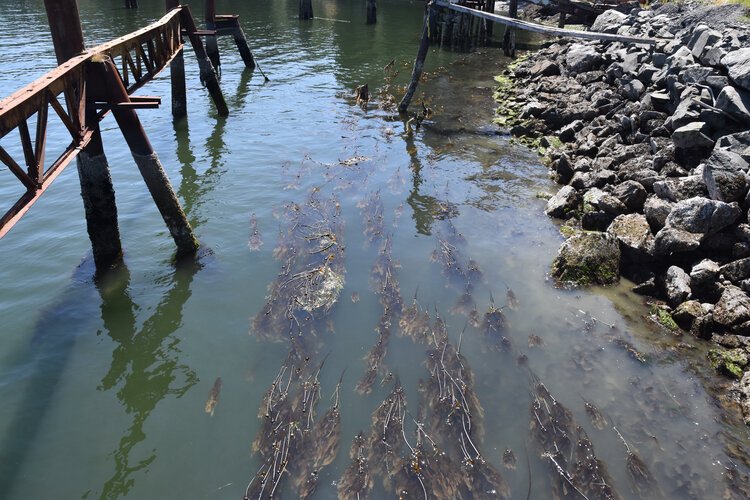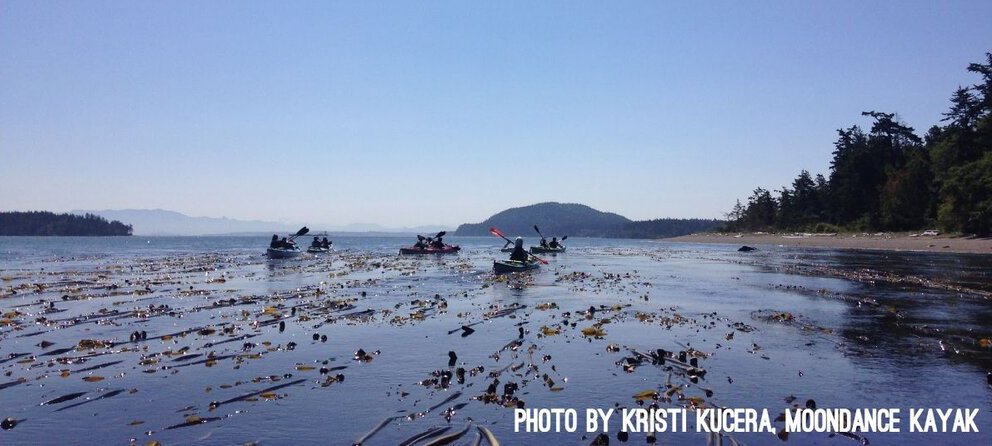Kelp-ing Mother Nature
Kelp Surveys
Large patches of brown algae swirl and sway with the sea. We often refer to it as kelp. Kelp is an amazing organism. Standing as a keystone species, it is critical to the health of the Salish Sea and its inhabitants. Keystone species help define an ecosystem: without their presence, the local environment would collapse or be in chaos. Kelp grows rapidly, creating an underwater forest which provides food, shelter, and habitat for other marine creatures.
Bull kelp is the most commonly seen species, yet its numbers are shrinking across Puget Sound. The Northwest Straits Commission is working with several local marine resources committees to survey kelp throughout the Salish Sea.
Here is the Aiston Preserve kelp bed in 2017. Notice how its growing close to shore and not near the old dock pilings.
Now here's the same kelp bed in 2020. It appears to have grown and slowly becoming a larger mass of brown algae.
Volunteers with the Whatcom County Marine Resources Committee recently came out to survey the kelp beds at the Aiston Preserve. For the past few years they have been monitoring several sites and studying these watery forests in depth. In order to survey the site, volunteers kayak around the perimeter of the kelp bed, using a GPS to map out the area where kelp is thriving. They look to see if the kelp bed is growing, shrinking, or staying the same size. They take temperature and depth samples as well as photographs.
Eleanor Hines, with the Whatcom MRC, says, “There's a lot we still don't know about kelp, but these surveys are one step closer to better understanding kelp so that we can better manage kelp conservation and recovery. The Aiston Preserve is a really interesting site providing insight into how this particular kelp bed is impacted by the Aiston Preserve restoration efforts.”
The Heritage Trust works hard to help protect and restore native habitats, like these kelp beds. The Aiston Preserve nearshore habitat was heavily damaged from previous rock and gravel mining at the site. Yet, in just a few years, we have already started seeing the kelp beds expand, meaning more nearshore habitat, more places for fish and crab to hide from predators, and an increase in diversity of marine life.
Learn more about the kelp surveys and the great work of our partner, Northwest Straits Commission, by watching this clip:




